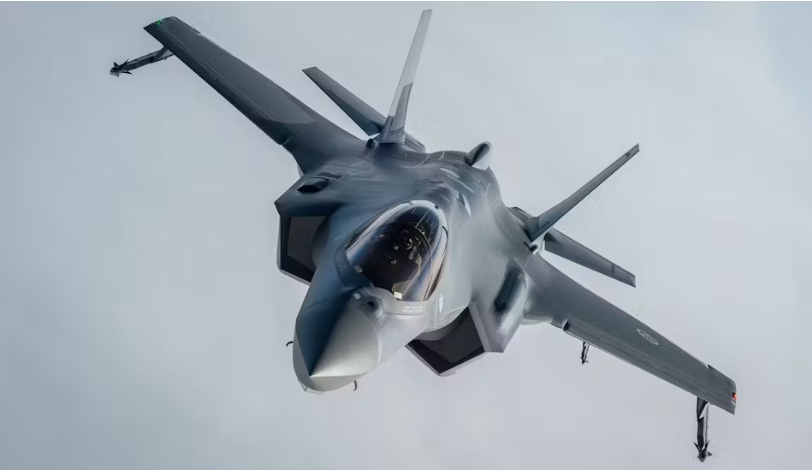
The F-35 is a fifth-generation fighter jet. The jet is an American family of single-seat, single-engine, supersonic stealth strike fighters. Stealth aircraft are those planes that can avoid technology detection such as radio, or radars. The aircraft is a joint program between the United States, the United Kingdom, and several other countries. It is currently being serviced in the U.S. military, Marine Corps, and various other allied forces.
The F-35 is quite a convoluted and expensive aircraft. Despite its complex features, it has been a matter of subject if the aircraft is worth the cost. There have been arguments over possible technical issues in the aircraft while some say it is a valuable asset to the U.S. military and its allies. This article explores the facets of the aircraft and analyses its merits and demerits to get a commendatory implication.
Specs of F-35

The fighter aircraft has a length of 51.4 ft (15.7 m) and a widespan of 35 ft (11 m), and its heights reach up to 14.4 ft (4.4 m). It offers a wing area of 460 sq ft (43 m2) and a fuel capacity of 18,250 lb (8,278 kg) internal. Talking of performance specs, its maximum speed is Mach 1.6 at high altitudes and Mach 1.06, 700 knots (806 mph; 1,296 km/h) at sea level. It has a combat range of 669 nmi (770 mi, 1,239 km) interdiction mission (air-to-surface) on internal fuel and 760 nmi (870 mi; 1,410 km), air-to-air configuration on internal fuel. These are the basic specifications of the aircraft now, let’s move on to the unique facets of the jet that make it different from others.
Merits of F-35 Lightning II
The F-35 Lightning II is a marvel of contemporary engineering, designed with an emphasis on stealth, speed, and versatility. Its sleek, angular design diminishes its radar signature, making it a challenge to detect by enemy radar systems.
- Stealth Technology: Stealth technology aka low observable technology minimizes detection from any enemy radar radio. The F-35’s build, materials, and coatings are designed specifically to diminish its radar cross-section, making it difficult for radar to detect.
- Advanced Sensors: It incorporates a suite of advanced sensors, including powerful radar and electro-optical sensors such as Northrop Grumman AN/APG-81 active electronically scanned array (AESA) radar, BAE Systems AN/ASQ-239 Barracuda electronic warfare system providing pilots with a comprehensive view of the battlefield. These sensors assist in seeing in pitch-dark, surroundings, spotting enemies from afar, knowing what’s around, and sharing information with allied troops.
- Sensor Fusion: The F-35’s sensor fusion system incorporates information from various sensors to give a clear and accurate picture of the combat zone. For instance, the APG-81 radar acts as a part of the electronic warfare
- Powerful Engine: The F-35 is powered by a powerful Pratt & Whitney F135 engine, enabling it to achieve rapid speeds and maintain exceptional maneuverability. The engine has a rated thrust of 28,000 lbf (125 kN) at military power and 43,000 lbf (191 kN) with an afterburner.
- Advanced Cockpit: The F-35 features an advanced cockpit with a 20-by-8-inch (50 by 20 cm) extensive touchscreen display and a helmet-mounted display, assessing pilots with critical information at a peek.
Demerits of F-35 Lightning II
The F-35 has faced several criticisms, including:
- Steep Cost: The F-35 is one of the most expensive fighter jet systems ever developed, with ongoing maintenance processes and upgrade costs adding to its overall price tag. The cost of the aircraft is around $110.3 million per F-35A, $135.8 million per F-35B, and $117.3 million per F-35C.
- Technical Issues: The Aircraft has faced numerous technical challenges, including software bugs, engine problems, and maintenance issues, which have led to delays and increased costs. The military even decided to lessen the usage of the aircraft but the prices kept rising. As the technology keeps changing updates were planned for last July but were delayed due to software instability.
- Limited Combat Experience: The fighter has indeed had limited combat exposure because its actual performance in the field has not yet been completely evaluated.
- Limited Stealth: It has been asserted by critics that the stealth capabilities of the Joint Strike Fighter could potentially be compromised in certain operational environments or with external weapons.
- The Payload Limitation: The payload capability is restricted by the relatively small size of the internal weapon bay of the F-35.
- Pilot Training: Due to the complexities of the internal systems in the strategic fighter, a pilot is required to undergo extensive training as well, which takes a huge cost of time and money.
Conclusion
The F-35 Lightning II is a unique pick among all the fighter jet options but one can not overlook the grave demerits. Modern warfare does not need a few exquisite stealth fighter jets but it needs systems that are affordable and available in more quantities. Overly advanced systems will complicate operating the system leading to a hike the costs. Until all the technical issues are not sorted military can prefer the possible alternatives like J 20, KAAN, X-32, and even drones. Drones have proved to be safer and more effected options in comparison to fighter jets.




